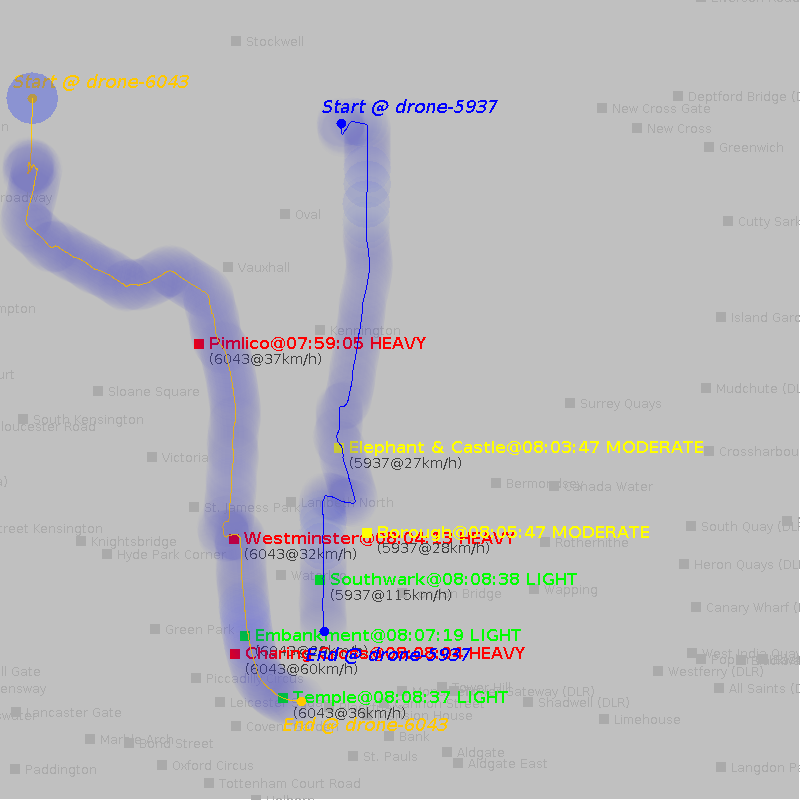3.3 KiB
Drone Simulator
This is an application for simulating Drone operations and reporting (fictive) traffic information for London tube stations.
Elephant & Castle @ 08:03:47: MODERATE (drone: 5937,speed: 27km/h, distanceToStation: 343m) Borough @ 08:05:47: MODERATE (drone: 5937,speed: 28km/h, distanceToStation: 346m) Elephant & Castle @ 08:06:37: MODERATE (drone: 5937,speed: 32km/h, distanceToStation: 349m) Elephant & Castle @ 08:06:38: HEAVY (drone: 5937,speed: 30km/h, distanceToStation: 347m) Southwark @ 08:08:38: LIGHT (drone: 5937,speed: 115km/h, distanceToStation: 339m) Pimlico @ 07:59:05: HEAVY (drone: 6043,speed: 37km/h, distanceToStation: 344m) Westminster @ 08:04:13: HEAVY (drone: 6043,speed: 32km/h, distanceToStation: 347m) Embankment @ 08:07:19: LIGHT (drone: 6043,speed: 29km/h, distanceToStation: 343m) Charing Cross @ 08:08:04: HEAVY (drone: 6043,speed: 60km/h, distanceToStation: 348m) Temple @ 08:08:37: LIGHT (drone: 6043,speed: 36km/h, distanceToStation: 345m)
Prerequisites
This application is written with Java 16 and so needs to have Java 16 installed before building.
Building application from source
To build the application run the following command in the root directory of the project:
./gradlew distZip
This will build a ZIP archive with the application in the ./dist folder. Extract it anywhere on your system to
execute the application.
Running application from sources
You can also run the application directly with Gradle without building a distribution. To run the application execute the following:
./gradlew run --args="--data-dir=./data 5937 6043"
This will use the example data provided in the ./data folder.
Command line arguments
Usage: drone-simulator [-hVw] [-d=<dataDir>] [-p=<simulationSpeed>][-s=<shutDownTime>] [-t=<tubeStationsFile>] DRONES...
-d, --data-dir=<dataDir> The path to the drone data
-h, --help Show this help message and exit.
-p, --simulation-speed=<simulationSpeed> The speed of the simulation time. 0 (real-time) -> 1.0 (no time simulation, instant)
-s, --shut-down-time=<shutDownTime> At what time should the simulation terminate
-t, --tube-stations=<tubeStationsFile> The path to the tube stations data
-V, --version Print version information and exit.
Output
The application outputs to artifacts after a successful simulation:
- The traffic reports are printed in the Console output
- An image file (traffic-report.png) is created in the current directory which contains the drone routes as well as the waypoints.
For more details about the operation of the simulation a ./logs directory will be created with logs from different
parts of the simulation:
./logs/dispatcher.log: This log file contains logging from the dispatcher as the simulation proceeds../logs/drone-<xxxx>.log: A log file per drone will be created to provide insights into each drone's operations./logs/report.log: This is the final traffic report log. It is the same information that is output to the console at runtime while the simulations proceeds.
